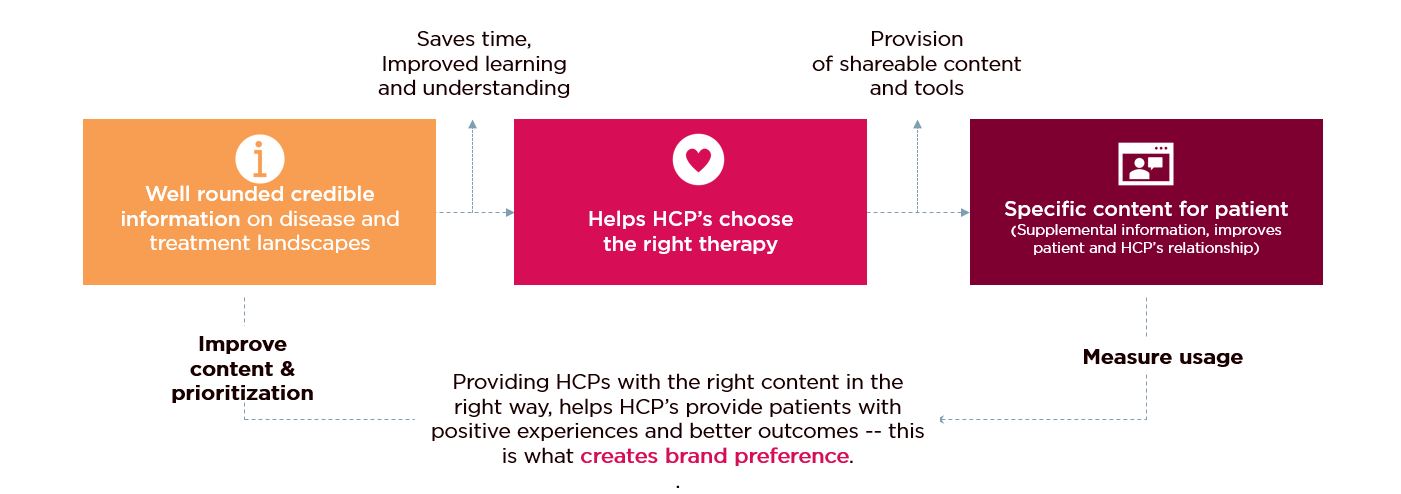The year 2020 saw a lot of change in the pharmaceutical industry, with traditional lines of communication between reps and physicians undoubtedly changed forever. But it was more than just COVID-19 that disrupted the status quo.
More and more HCPs are turning to digital content as a source of knowledge, relying on various digital touch points, and sharing online content with their peers. With this growing access to networked intelligence, the requirement for pharma to acquire a better understanding of the learning behaviours and preferences of HCPs is also increasing. Continuous access to information and multiple tools for evaluating medications has weakened pharma’s control over the generation of information about their products and their efficacy.
Alongside this steady change, both HCPs and patients have increased expectations in terms of their experience with brands— often wanting content that is more tailored, more personal, and more transparent. As HCPs feel overloaded with information, finding it difficult to stay up to speed with everything coming at them, it’s more imperative than ever to ensure that content adds value.
Gone are the days of the linear product push from reps to physicians. HCPs want time-saving strategies that will help them gain greater depth of knowledge about drug efficacy and disease progression. The greater their knowledge, the better they can develop personalized plans for patients – where they can make the right interventions that can help improve outcomes.
If you’re not helping your HCPs become better doctors who can provide better solutions for patients, you risk being ignored.
How this looks as a digital value proposition

So what types of content will create brand preference?
Several surveys show that HCPs do not want to be overtly sold to; instead they are seeking a partner in care. Physicians look for transparent, objective and accurate information and increasingly seek out and value their peers’ opinions and insights. Content ideas should be centred around helping them achieve their goals as physicians – things that save them time, equip them to help patients, provide reprieve from screen fatigue, and don’t add extra barriers (like more logins).
Things like interactive designs that show the patient pathway for a new drug,
Informational videos on administering therapies or visuals of possible side effects (“What to expect”), or podcasts that help with the practical implementation of knowledge.
Content that socializes patients to concepts surrounding their disease prior to their appointments, buys back HCPs their time, but also adds value to the patient/physician relationship.
Giving HCPs the right content, in the right format, helps them provide patients with positive experiences and better outcomes.
This is what creates brand preference.
The test and learn approach to digital content
Pharma can learn from a widely used “test-and-learn” approach – this includes the rapid prototyping and A/B testing of value propositions and messaging to ensure efficacy. Additionally, all content that is digital is measurable – increased ability to track and measure will allow companies to act on results in order to continuously improve their marketing strategies.
A successful digital footprint inevitably includes being iterative, testing and failing fast. Try out new ideas and keep learning, rather than looking for the “perfect” solution.
Don’t let perfection be the enemy of good.

